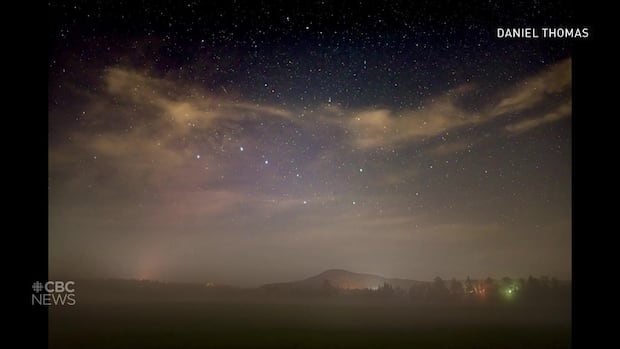How to see the 'planet parade' on now

Want to spot up to six planets at once in the night sky? Look up before dawn this week for the second and last "planet parade" of the year.
Which planets can you see?Right now, with just the naked eye, you can see four planets at the same time before dawn: Mercury, Venus, Jupiter and Saturn.
The latter three have been visible for weeks, but Mercury turned the sky into a "parade" when it joined them this weekend. Mercury has been faint and close to the horizon, but is currently getting brighter each night, and will be at its highest above the horizon on Tuesday, Aug. 19, reports Forbes.
Later in the week, Mercury will begin moving closer to the horizon again before eventually sinking into the glare of dawn later this month, ending the parade.
Two other planets, Neptune and Uranus, are only visible with telescopes.
If you're wondering where Mars will be in all this, it will be barely visible low in the west during evening twilight, but will set at nightfall, writes Alan McRoberts on Sky & Telescope's weekly planet roundup.
What will they look like?Canadian astronomy educator Chris Vaughan warns in his Skylights blog that during the "planet parade" the planets "won't be stacked like bowling balls as depicted in all the A.I. generated images on social media, and they aren't that close together."
Andrew Fazekas, astronomy columnist for CBC Radio, said what the planets will actually look like is bright points of light. "To the naked eye, you're not going to see anything spectacular," he said, adding that it should be thought of less as a spectacle and more as a "wonderful observing challenge" — to be able to spot so many planets at once.

However, one thing that may make it extra worthwhile is the crescent moon, which Fazekas says will be eye-catching and a "wonderful guidepost" to help identify different planets. That's because it will be near Jupiter on Tuesday morning, near Venus on Wednesday, and near Mercury — which is often hard to find — on Thursday morning.
Vaughan says this could make for some good photo opportunities.
"On Tuesday morning, the moon will show a slimmer crescent and shine just above those planets, making a lovely photo!" he writes. "Wednesday will deliver a second photo op while the even narrower crescent moon shines within the box formed by Castor, Pollux, Jupiter, and Venus!"
Where and when should you look?The planet parade is best seen in the east in the hour before dawn.
A good view of the horizon will be needed, especially to spot Mercury. Vaughan says Mercury will rise around 5 a.m. and will be most visible between 5:30 and 6 a.m.
Fazekas recommends looking 45 minutes before sunrise and warns "you have to be fairly fast before Mercury sinks."
Venus and Jupiter will be higher, near the moon.
Saturn will be high toward the south, McRobert writes.
Uranus will be near the star cluster Pleiades and Neptune will be near Saturn. Both will be visible with binoculars, and Fazekas says a telescope is better for viewing Neptune.
Why do the planets appear to line up?Planets always appear in a line or arc across the sky because they all orbit in the same disc-like plane as the Earth, which we see edge-on. NASA likens it to viewing cars on a racetrack from the racetrack itself.
How rare are planet parades?They usually happen every few years to once a decade, depending on your definition, although this is the second for 2025. The previous took place from January to mid-February, when four planets were visible after sunset rather than before sunrise.
If you want to see all five planets visible to the naked eye at once, you might want to mark your calendar for October 2028 — in that month, they'll all appear together before sunrise, NASA says.
cbc.ca





